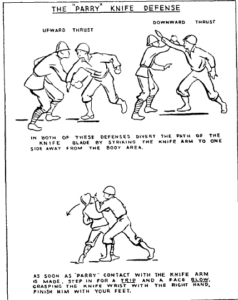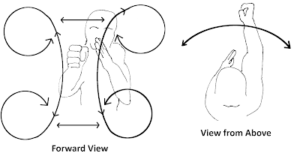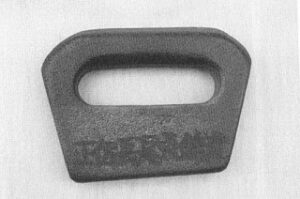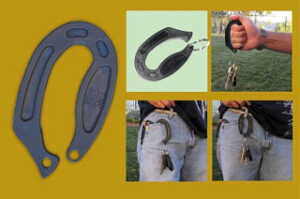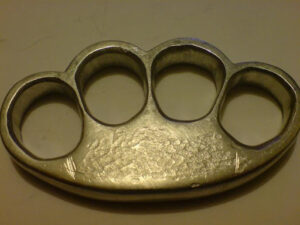In keeping with the time of year, I thought that I would examine counters to another staple of slasher movies (and self-defence books!) the overhead knife attack, sometimes called the “John Wayne Indian Attack”.
As I discuss in my book, this is not a particularly good way to use a knife but is often shown in self-defence books since it allows the author to show clever countermoves.
In the movies, it makes for a nice dramatic shot, as can be seen in this rogue’s gallery.
While the overhead has many flaws as an offensive technique, it is one that does get used in real life. Many domestic murders are apparently committed using this attack, where passion tends to override technique.
The same basic action is also used for a club or machete attack, and the same counters can be employed. (that is why the photo of Jason is here, and I couldn’t find one of him with a knife, although he has used this attack).
Knowing how to counter this attacking action is therefore quite useful.

First up is the counter that you will see suggested in the majority of self-defence books, which is known by various names such as the “reverse armlock”.
The attack is blocked with the left arm, often with the left hand grasping the knife wrist, then the right arm comes up behind, grips the defender’s other arm and executes a lock that can be turned into a throw.
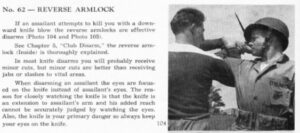
Here we see another view of the same technique from another angle. This photo is taken by “Combat Judo” by Robert L. Carlin. Carlin at least has the sense to mention that such an attack would be relatively unlikely from a trained enemy.
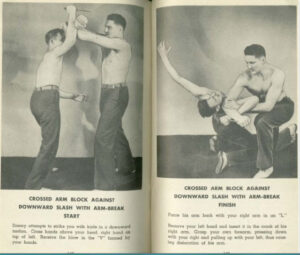
Yet another view, this time executed from an overhead cross block. If you have read my book, you will know about the flaws of this technique, particularly against edged weapons.
While this provides a stronger initial block than using just the left hand, it does leave your head and body in the path of the attack should the block fail.
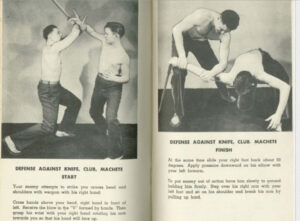
An alternate counter, again from the cross block.
If the attacker had been stabbing in an ice pick grip, his sword bayonet would have probably reached the defender’s face!
The follow through of moving to the outside and attacking the arm is worth noting, and would have been possible if the defender had instead used an outward parry with his right arm, taking himself out of the line of attack.
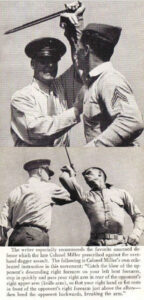
The “Miller method” is from Biddle’s “Do or Die”.
The attack is blocked with the left arm and then right is passed behind the stopped knife arm, hooked over it and used to make a throw. Unlike the Reverse Armlock, the two arms are not used together. One arm stops the attack and then the other throws the attacker.
In “Kill or Get Killed” Biddle’s contemporary, Rex Applegate, was rightly critical of many of the above methods.
Applegate felt that trying to catch the knife wrist in your hand, as many manuals suggested, was too prone to failure.
A powerful blow, as this was likely to be, would overcome the thumb.
Using the forearms to block could numb the arm and also be prone to failure.
Many of these methods rely on initially using the left arm, which Applegate pointed out is less co-ordinated for most individuals.
Add into this equation that knives are often used in poor light conditions so the defender may not be able to see the arm well enough to execute a fancy counter.
As can be seen, Applegate’s preferred method involves using the right arm in an outward parry, taking the defender to the outside gate.
Various counters follow from the outside gate position.
You can use the arm level technique shown in the second cross block illustration.
You can punch with your left below his armpit or into his kidney. Or you can throw your left hand over his face and throw him back over your left leg.
In fact, I would recommend that move. Since you will be powering your right outward parry with your waist, you may use the same action to raise your left arm too and swing it in toward the aggressor.
Applegate illustrates an outward parry and finishing on the attacker’s right side. You may not have room to do this so also practice an inward parry with the right too.
Use your principles of Long Har Ch’uan here too.
As you move the attacking arm to your left (swinging your body out from under the attack) bring your left arm up vertically to take over the parry. This will free up your right hand, which will be in a good position for a hammer-fist or knife hand attack to the attacker’s head or neck.






